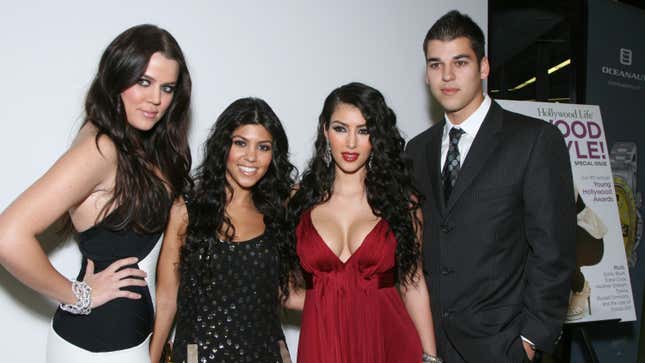

The end of Keeping Up With the Kardashians was always inevitable. When Kim Kardashian West announced Tuesday that the show would come to a close in 2021, the impact of this news wasn’t quite earth-shattering. For viewers still dedicated to the well-edited, carefully constructed narratives that E!’s producers and Kris Jenner made for television, the writing was already on the wall. In the trailer for the forthcoming season, which premieres later this month, the family endures the horror of early quarantine with the same shock, horror, and frustration as the rest of us, but the shine has dimmed—the story the trailer promotes so breathlessly is in the past. The show itself is an antiquated platform for the sisters’ business empire, but its importance to their rise cannot be overstated. Though Kris’s army of famous daughters has long outgrown the very thing that catapulted them into the stratosphere of fame, the show provided a new path towards celebrity that has irrevocably changed the cultural landscape, for good or for bad.
Keeping Up With the Kardashians launched in 2007 when Kim, the middle sister, was largely known for a sex tape with Ray J and being Paris Hilton’s assistant. Early episodes of the show reveal just how much the family has changed, guided by the steady hand of momager Kris, whose business savvy and cunning should be studied in business schools worldwide. Initially, the show was about nothing in particular—just some attractive, rich women who all happened to be sisters, living a curated version of their lives for a crew of reality TV cameras. Despite sharing a production company, Bunim-Murray, with early entries into the reality genre like The Real World, KUWTK always hewed to its own specific timeline, which was so divorced from reality that it spawned a column here at Jezebel obsessively tracking the continuity errors. The show served as a vehicle for a certain kind of fame that is now commonplace: people famous for simply being an iteration of themselves, rather than any sort of actual achievement.
In the Kardashians’ Calabasas enclave, they were nothing more than a regular family dealing with regular family drama. Kim and her sisters, Kourtney and Khloe, fought with and loved each other for the all-seeing eye of E!’s cameras, in ways that are relatable for anyone with sisters or a family. Their relatability was part of the show’s charm in the earlier seasons; even though the Kardashians have always been extremely wealthy, on television, they were still just bickering siblings.
In an argument from Season 2, Khloé and Kim fight about a Bentley, but the malevolent sisterly energy that runs through this entire clip feels relatable in a way that few other reality shows can match. Consider the scripted, belabored fights on any Real Housewives franchise or the predictable plot lines of The Bachelor and compare those to the Kardashian’s unfettered reality. Regardless of how noxious you might find the sisters, their relationship has always felt more authentic.The early seasons have a charming, clunky, low-budget feel that slowly disappeared as the show progressed, tracking neatly alongside the Kardashians’ rise to fame. The show’s opening credits in the first season established the family as a bumbling clan of rich brunettes lacking any real self-awareness. As the seasons progressed, the opening credits evolved to match their shiny, sleek, and augmented personalities, but were still imbued with a sense of nostalgia for simpler times. The opening credits went back and forth between heavily filtered contemporary images and old family videos, creating a continuity between the two. That back and forth, forever summoning up the notion of family, no matter how famous they got, was always part of the Kardashian appeal.
The blueprint provided by KUWTK is now a staple of reality TV, a simple formula that showcases regular people doing relatively regular things, hoping that their personalities will be enough to launch them towards some form of fame. Influencers and YouTubers have deployed the same strategies, using the Kardashian model as a way to rocket themselves to rather dubious fame, proving that with enough clever editing and quirky personality traits, anyone can be a star. It’s not that the Kardashians invented influencing, but their prominence in the cultural landscape paved the way for others to iterate upon the art form. Reality television in its current incarnation has produced a thriving ecosystem full of C-list celebrities striving towards the same sort of fame the Kardashians have achieved. In a sense, the family democratized celebrity, making the very concept of “fame” as it had always been a relic of the past.